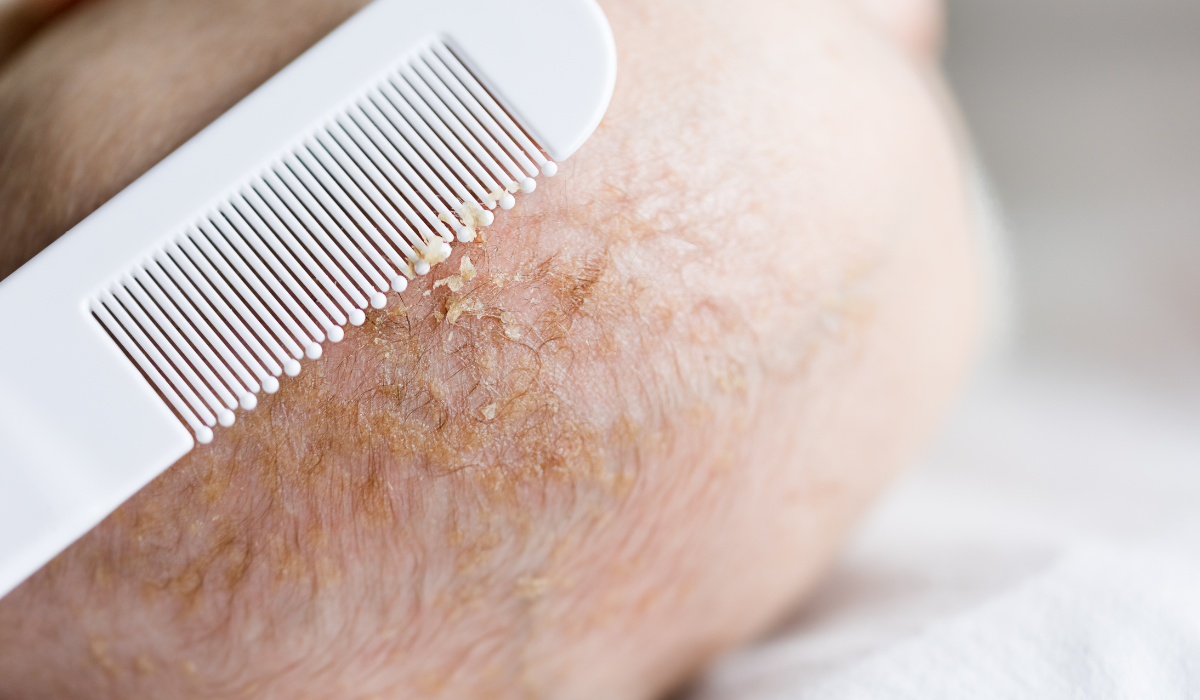
5 Cradle Cap Facts & How to Manage It
|
Time to read 6 min

|
Time to read 6 min
Cradle cap—a common yet often misunderstood part of newborn care. Those flakes which can appear to be white or yellow, are usually a sign of skin finding its balance. While harmless, knowing how to care for your baby’s scalp with intention can make all the difference.
In this guide, we share five facts about cradle cap—what causes it, how to manage it effectively, and which rituals best support your baby’s delicate skin.
Caring for cradle cap goes beyond clearing flakes—it’s about honoring the skin’s natural process, choosing products with purpose, and creating a routine that nurtures from the very beginning.
Cradle cap, medically known as seborrheic dermatitis, is a common skin condition that affects infants, typically appearing within the first few months of life. Characterized by scaly patches on the scalp, cradle cap can often result in yellowish, greasy flakes that may appear alarming to parents. However, while it may look concerning, cradle cap is generally harmless and can be resolved on its own as the child grows.
The skin on an infant's scalp is sensitive and still developing, making it susceptible to various conditions. Cradle cap is not caused by poor hygiene, nor is it contagious; rather, it is believed to be linked to overactive sebaceous glands that produce an excess of sebum. This oil, while crucial for skin health, can trap dead skin cells, creating the characteristic flakes associated with cradle cap. As the child matures, these glands typically regulate themselves, leading to a natural resolution of the condition.
For many parents, cradle cap can be frustrating and worrisome, especially when they see their little one with crusty patches on their head or on the eyebrows. But it should be comforting to note that cradle cap is not painful for the baby and in general it does not cause discomfort to them. Read on to learn 5 facts about cradle cap.
Cradle cap and eczema—both often happen to delicate, sensitive skin.
Cradle cap is usually harmless, often passing on its own. It’s not typically itchy or inflamed, just a sign of the skin’s natural rhythm finding its way.
Eczema, on the other hand, is drier, more restless. It can appear as red, irritated patches, sometimes spreading beyond the scalp to the cheeks, arms, or legs. Unlike cradle cap, eczema is often linked to a compromised skin barrier and heightened sensitivity to environmental triggers—fragrances, fabrics, even the air itself.
But are they connected? In some ways, yes. Babies with extensive cradle cap issue have higher chances of developing eczema later, simply because their skin is more reactive.
Cradle cap typically carries no scent, but occasionally, a mild odor may arise from the excess sebum/oil lingering on the skin.
This happens occasionally when the excess sebum is mixed with sweat, milk residue, coupled with the warmth of a tiny head resting against soft fabrics, it can create an environment where microbes thrive. The result? A faint, musty note—it should not smell terrible, just a slight oily scent.
If the scent gets too strong, or if redness or irritation appears, it is best to consult a pediatrician.
Cradle cap can reappear and recur, even after it seems to have completely cleared. This is because the underlying factors—excess oil production, the presence of natural skin yeasts like Malassezia, and a baby’s still-developing skin barrier—can fluctuate over time. The sebaceous glands remain active during infancy, and periods of increased oil production can lead to another cycle of flakiness. Changes in weather, shifts in skincare routines, or even mild irritation from fabrics, detergents, or environmental factors can also contribute to its return.
While it may feel frustrating to see the flakes come back, cradle cap remains harmless and temporary. It doesn’t mean something is wrong, nor does it require harsh treatments. Instead, a consistent yet gentle approach (more recommendations on management of it below) can keep the skin comfortable. Over time, as a baby’s skin matures and regulates itself, cradle cap naturally becomes less frequent and eventually fades away.
The precise cause of cradle cap remains somewhat elusive, but several factors contribute to its development. One significant factor is the overproduction of oil from the sebaceous glands. These glands are stimulated by maternal hormones that are passed to the baby during pregnancy. This hormonal influence can lead to an increase in sebum production, creating an environment where cradle cap can thrive.
Another contributing factor may be the presence of a yeast called Malassezia, which is naturally occurring on the skin. In some infants, this yeast can proliferate, leading to inflammation and the subsequent scaly patches that characterize cradle cap. It's important to note that environmental factors, such as changes in weather or irritants from products used on the baby's scalp, can also play a role in exacerbating the condition.
While cradle cap is more prevalent in babies, it can occasionally occur in older children and adults as well. In older kids, this condition is often linked to seborrheic dermatitis, or in simpler terms, skin imbalance that can appear on the scalp, behind the ears, or around the nose. It is more commonly caused by excess oil production, mild fungal overgrowth (Malassezia), or even changes in climate and hair care routines can contribute to lingering flakiness.
Cradle cap is not contagious—it’s a completely harmless and natural part of many babies’ early skin development. Unlike infections caused by bacteria or viruses, cradle cap doesn’t spread from baby to baby and isn’t a sign of poor hygiene or illness. Instead, it occurs due to an overproduction of oil from the sebaceous glands, which traps old skin cells on the scalp, leading to the characteristic flaky, yellowish patches.
Because it’s caused by the skin’s own natural processes, there’s no risk of passing it to other babies, siblings, or caregivers. It’s simply the scalp adjusting to life outside the womb, finding its balance in its own time.
They typically present as patches of crusty, scaly skin on the scalp. These patches can be yellowish or brownish in color and may range in size from small areas to larger regions of the scalp cradle cap may also lead to mild redness or inflammation on the affected areas of the scalp. While the condition itself is not itchy, some babies may experience discomfort as the scales build up. Parents should keep an eye on the condition to ensure it does not worsen or lead to secondary infections, which can occur if the skin becomes irritated or scratched.
Cradle cap can sometimes lead to temporary hair loss, but it’s not a cause for concern. The thick, flaky patches that form on the scalp can loosen and lift hairs as they shed, simply because those hairs were trapped within the scales. This isn’t true hair loss in the medical sense—rather, it’s a natural part of the skin’s renewal process. The hair follicles beneath remain healthy and intact, meaning new hair will grow back in time. As the scalp rebalances and the cradle cap resolves with gentle care—mild cleansing, soft brushing, and nourishing oils—any lost hair will naturally return, leaving behind a healthy, comfortable scalp.
Finally, when it comes to managing the flakes and crusty build up, a combination of using gentle oils to slowly soften the area and light exfoliation is most recommended.
Below is a step-by-step approach on this method
Establishing a good cleansing ritual can help with preventing the recurrence of cradle cap. By incorporating a mild baby shampoo such as Saponaria Wash & Shampoo to wash the scalp at least two to three times a week as it helps to remove excess oil and flakes while keeping the scalp clean.
Additionally, consider the importance of hydration. Keeping your baby's scalp moisturized can significantly improve the condition of cradle cap. A conditioner that focuses on scalp care for babies such as Castor Oil Nourishing Conditioner can keep the scalp well hydrated, calm and happy. It can also aid in faster hair regrowth for areas that experience hair loss from the cradle cap.
